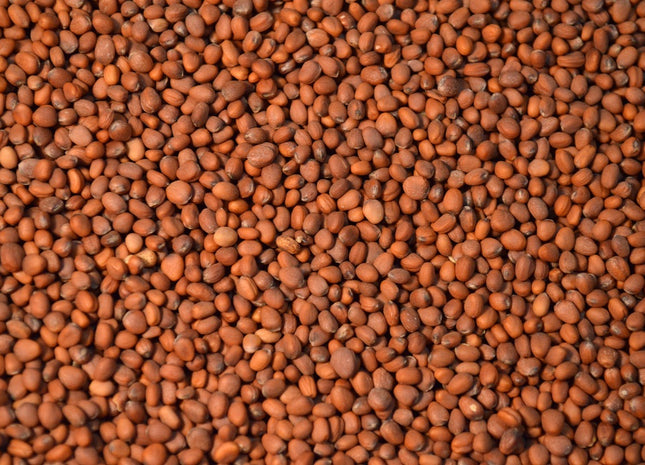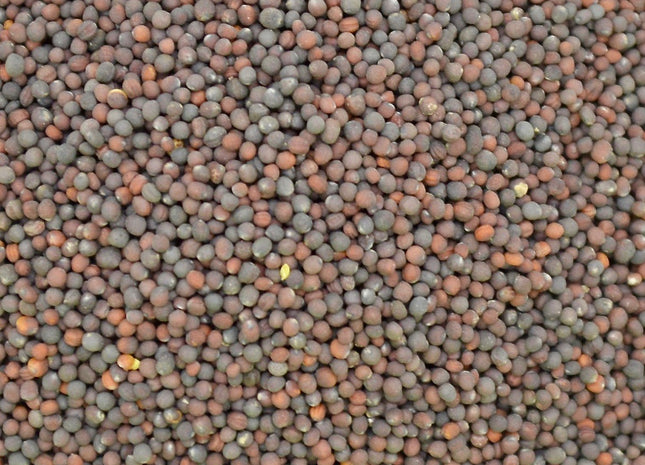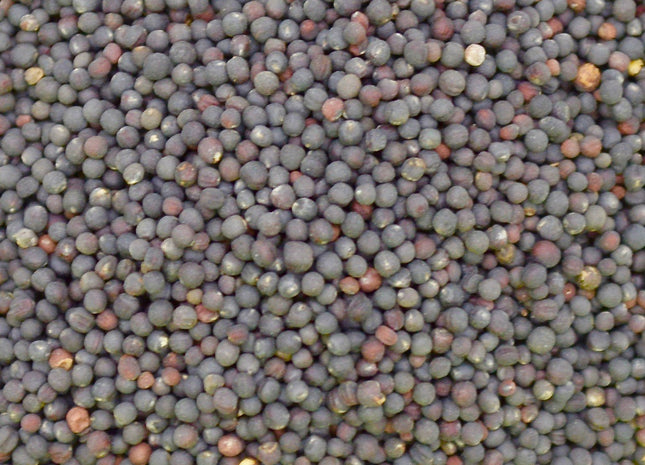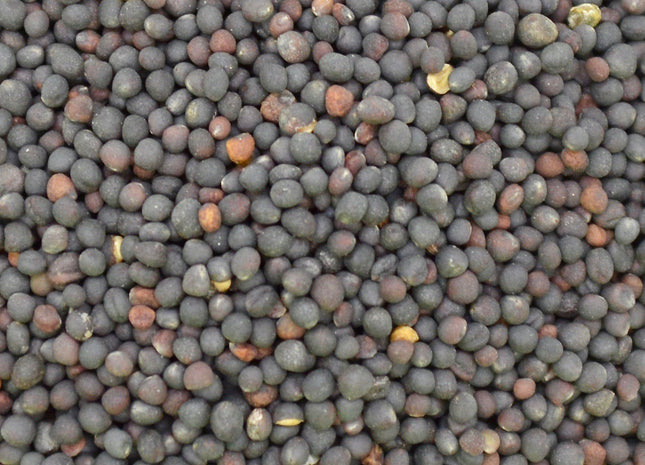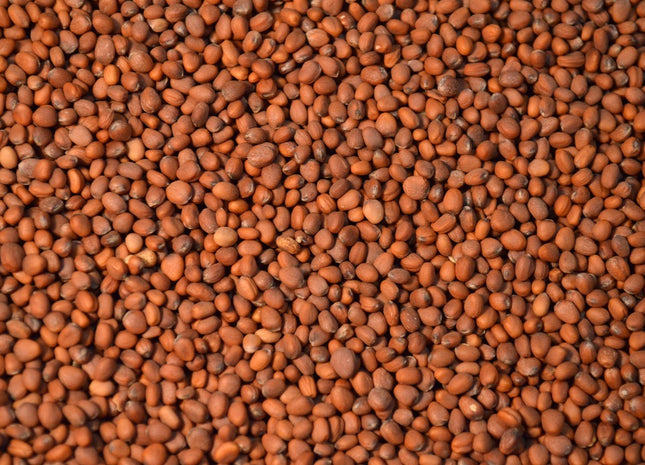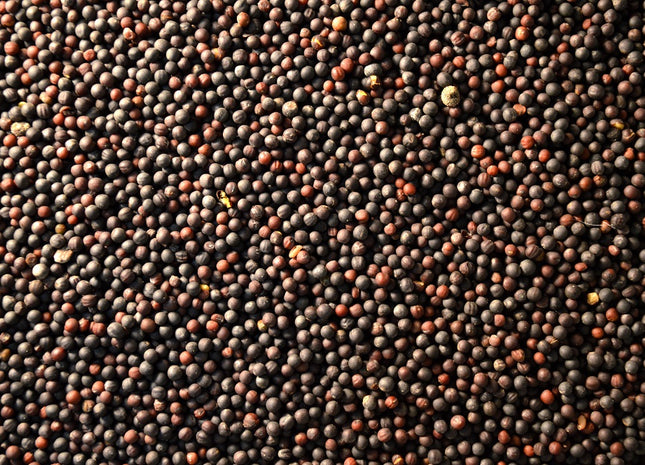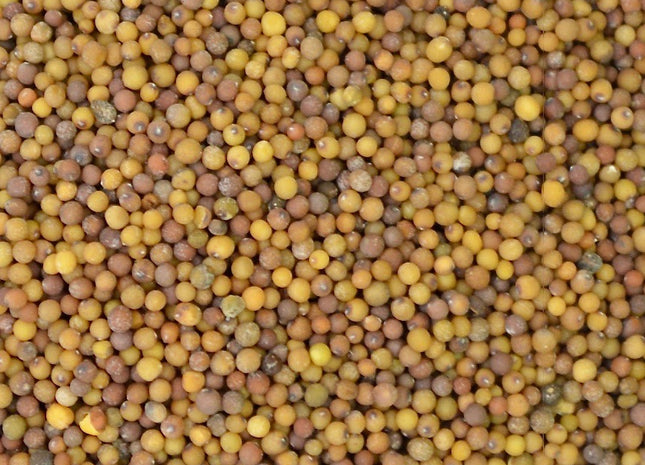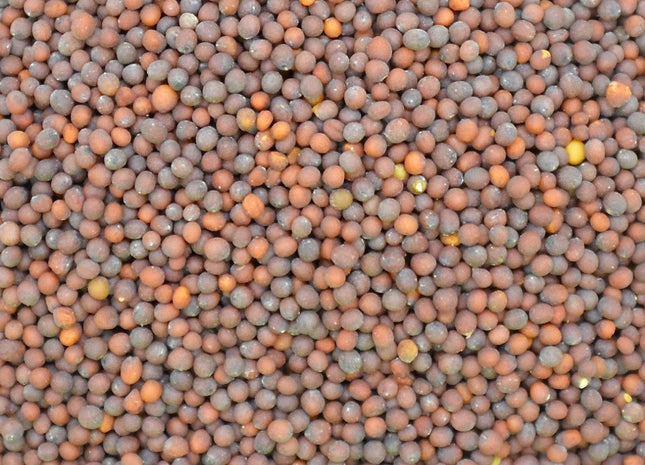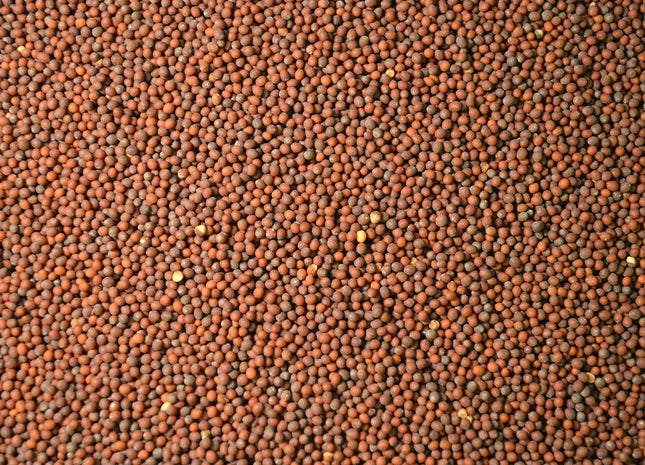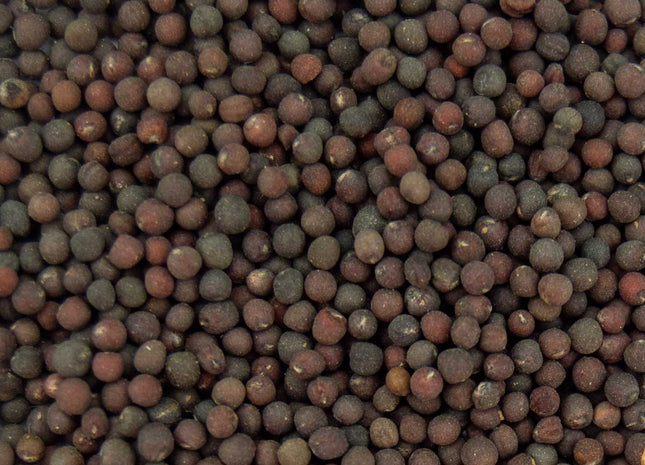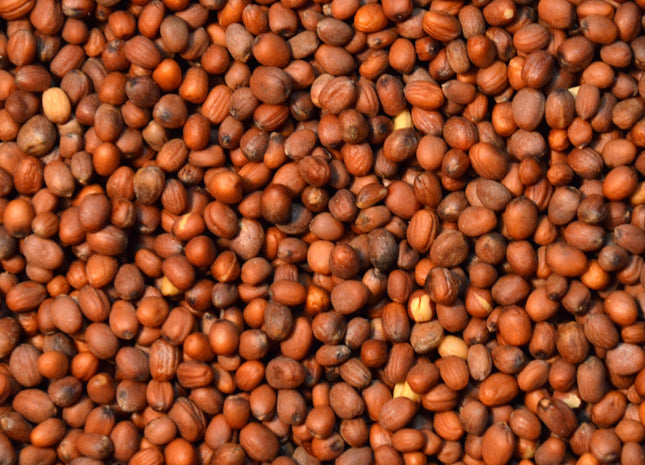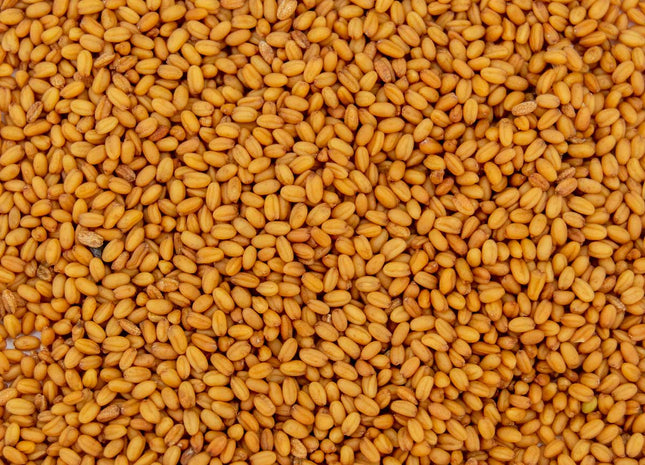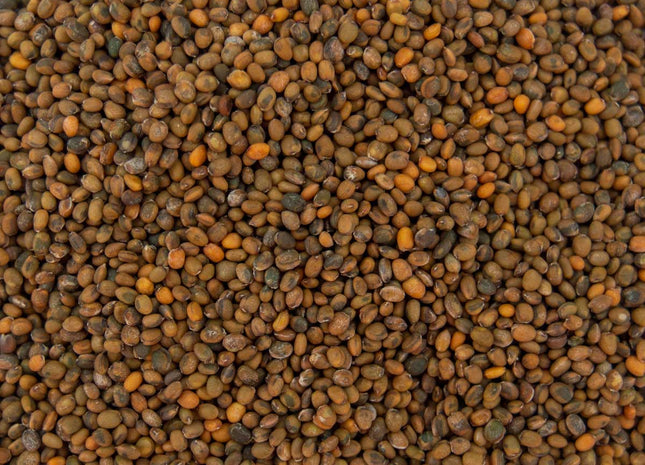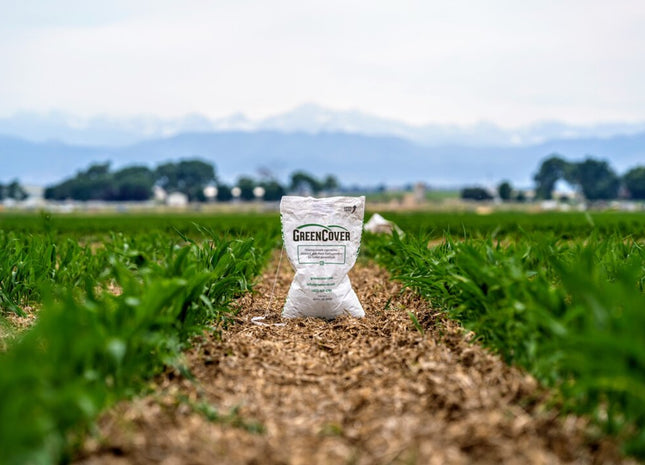Brassicas

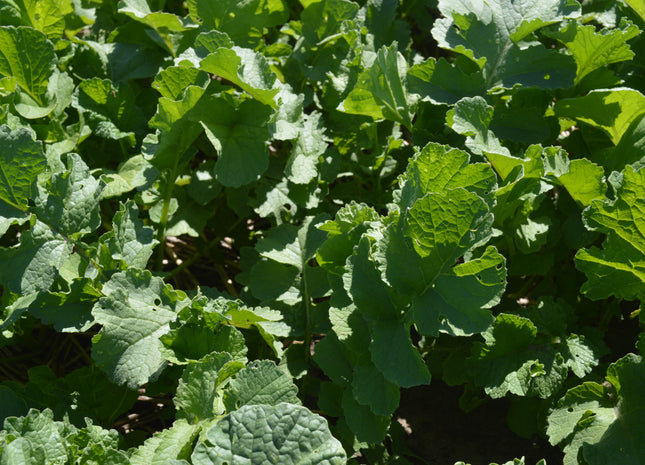
Radish (Nitro)
Rapid fall growth in short windows allows radishes to fit perfectly into a traditional corn and soybean rotation. Radish residue breaks down very quickly in the spring leaving a clean seed bed. The residue has been proven to inhibit small seeded annuals from germinating. Nutrients that were scavenged are readily released back into the soil for the subsequent crop. A field planted in radishes, will allow the soil to dry and warm faster in the spring. The large root channel left behind is rich in nutrients. It allows tremendous water infiltration and reduces water erosion by creating a path for crops roots to follow through compacted soil layers. During decomposition radish biofumigates the soil which can reduce pest and nematode populations.
from $1.55 per lb

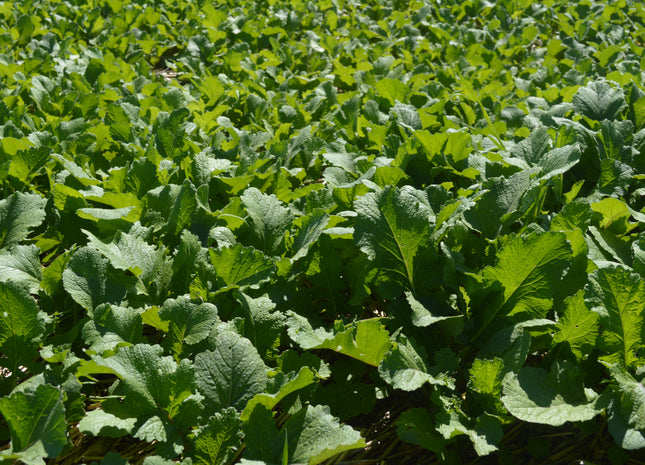
Turnip (Purple Top)
Purple top turnips have been a staple grazing brassica for many years and are commonly used in late summer planted grazing mixes, often with a cool season cereal. Turnip bulbs are storehouses of nutrition and energy and are very valuable to winter grazers.
from $1.50 per lb

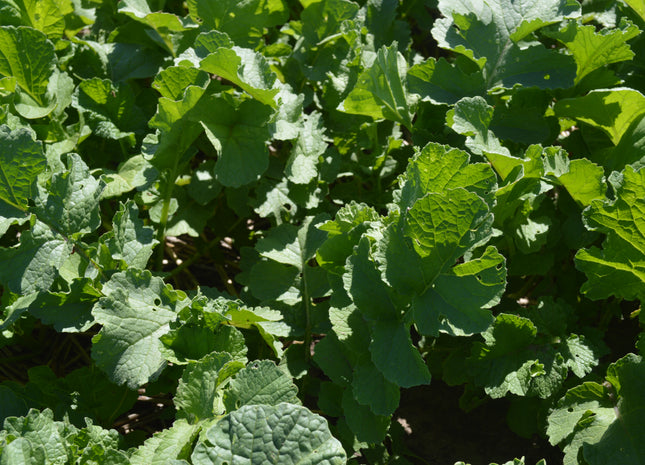
Forage Collards (Impact)
Impact forage collards are one of the best grazing brassicas on the market. The large, smooth leaves are very palatable and our testing shows that these collards have the highest protein content in the brassica family. Collards can withstand some of the widest ranges of weather, from hot and dry in the summer, to temperatures down to the low single digits in the winter.
from $2.28 per lb

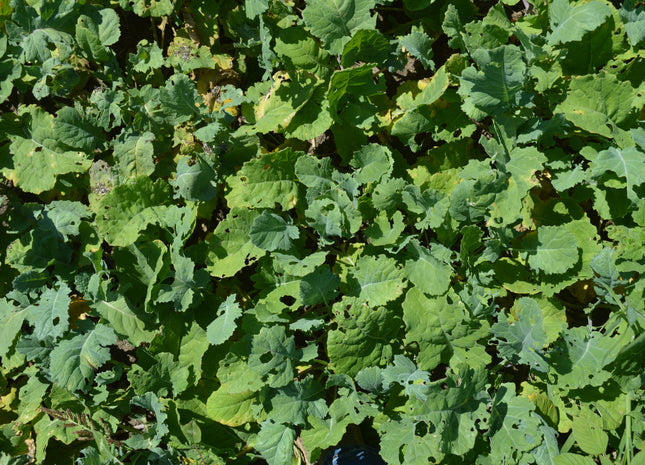
Rapeseed (Trophy)
Rape's rapid forage growth produces quality pasture equivalent to alfalfa, with a crude protein value around 16-17%. Boasted for its nutrient scavenging abilities, rape can accumulate potentially large amounts of residual N up to 120lbs N/A. Also, root exudates secreted by rape are known to aid in turning insoluble P into a more available form. Rapes seed cost is by far the cheapest of all the brassica species, generally less than $1/lb. Adding rape in between wheat crops has been shown to greatly reduce take-all in wheat. Rape has an excellent, deep penetrating tap-root with a dense fibourous root mass surrounding the tuber.
from $1.10 per lb

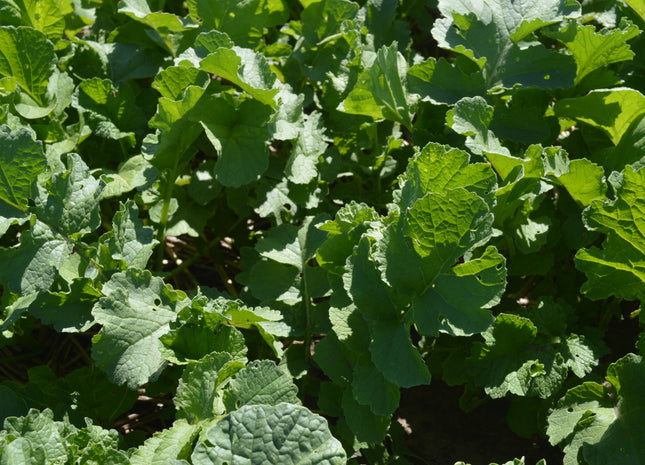
Radish (Smart)
Green Cover Seed is proud to market the all new Smart Radish. It is bred specifically for the cover crop and soil health market with more lateral roots to help it grow further into the soil profile without heaving upward when it hits a compaction layer. The variety has a trait for higher plant tillering to provide more leaf area and higher plant biomass than many other radish options for forage, soil, cover and green manure. Larger leaves mean more solar collection area to harvest the sun’s energy, and the smoother leaf means it’s better for forage and grazing.
from $2.45 per lb

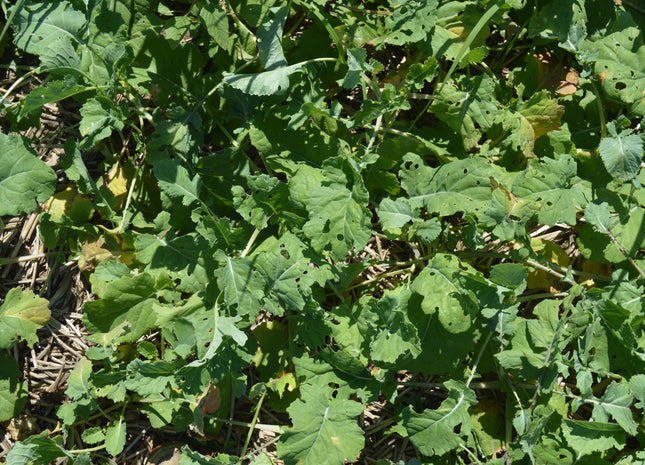
Kale (Bayou Kale-Rape Hybrid)
This hybrid plant is the product of blending two brassica parent plants: kale and forage rape. This innovative hybrid boasts a unique combination of qualities, harnessing the quick establishment capabilities of forage rape and the exceptional winter resilience of kale. The resulting kale-rape hybrid stands as a superior source of high-protein forage, tailor-made for winter grazing. Its accelerated growth, robust vigor, and resilience to harsh winter conditions make it an ideal choice for livestock feed.
from $3.00 per lb

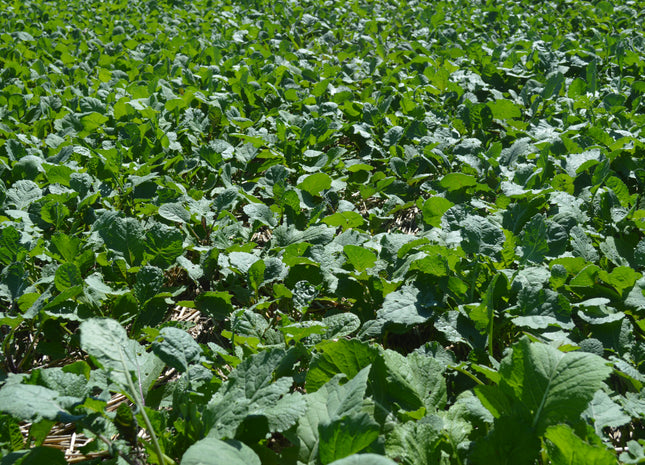
African Cabbage
African cabbage, a robust and rapidly growing brassica, thrives in a variety of warm season mixes, which makes it an intriguing option for interseeding into corn mixes. What sets it apart is its unique ability to stand tall and keep its leaves even in the face of cold weather, making it an exceptional choice for a snow-catching cover crop. Its enduring residue and strong root system enable captured snow to seep into the soil, enriching the moisture content in your land.
from $2.38 per lb

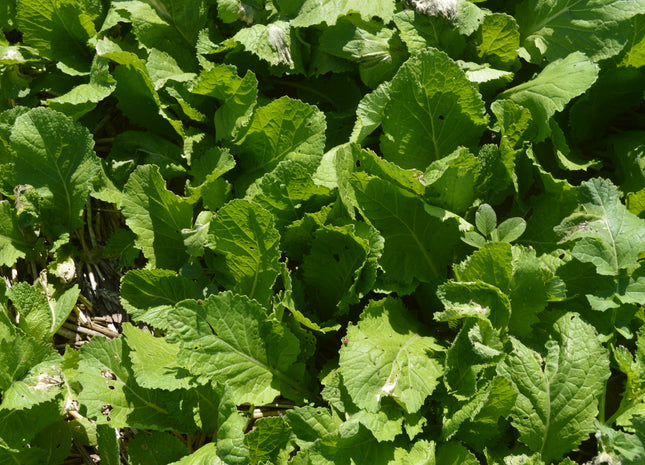
Florida Broadleaf Mustard
Florida broadleaf mustard is an excellent option for grazing mixes. With great palatability and high nutrient content, this mustard will keep your livestock coming back for more. Florida broadleaf mustard is also known for its ability to be utilized as a natural dewormer in grazing systems.
from $1.45 per lb

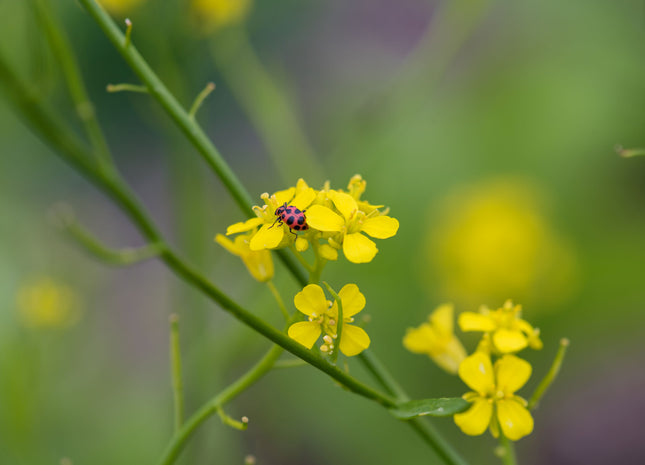
Brown Mustard (Kodiak)
Mustard produces significantly more glucosinolates than other brassicas, which biofumigates the soil during decomposition, proving to be toxic to many soil pathogens and pests. To best utilize these glucosinolates, mature green vegetation should be turned into the soil. In no-till operations you will still benefit from having this species for this use. When allowed enough growing season, brown mustard stem residue can remain erect throughout the winter months and aid in capturing snow to help build moisture in the soil profile. Growing mustard in a potato rotation was observed to increase tuber quality and yields similar to that of chemically fumigated fields. Other documented effects of having mustard in your rotation is suppressing potato early dying and reduced root rot in pea rotations. Some customers are concerned that these mustards are difficult to control like their wild cousins but actually they can be easily terminated with many commonly utilized herbicides.
from $2.50 per lb

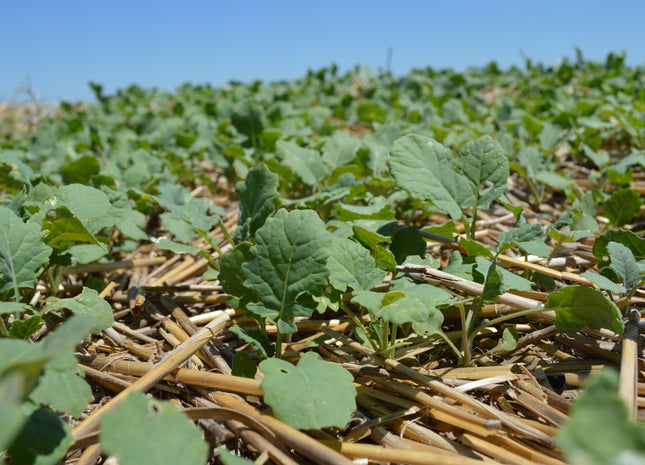
Siberian Kale
Siberian kale, like many other brassicas, are a great addition to a variety of mixes. The deep taproots allow the plant to access nutrients and water deep in the soil profile. The wide leaf and good palatability of kale works great in grazing mixes for livestock. A good cold tolerant brassica can last deep into the fall for good fall and early winter grazing.
from $2.50 per lb

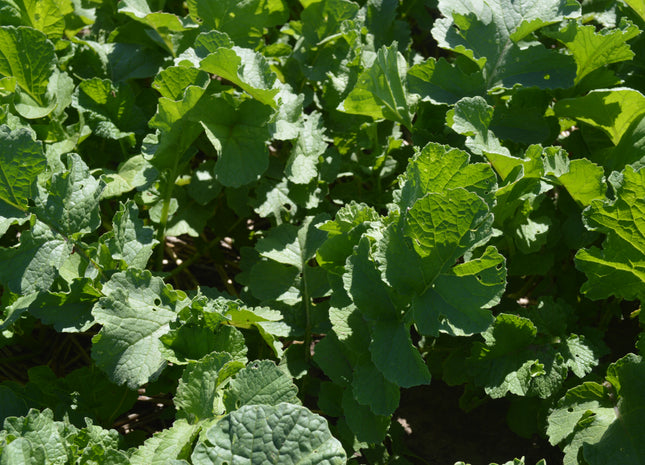
Radish (Nematode Control)
Nematode Control Radish possess a unique mechanism for nematode management. They release a specific biochemical compound from their roots, which prompts cyst nematode eggs to hatch prematurely. Subsequently, these nematodes adhere to the radish root, but struggle to acquire sufficient sustenance. Since radishes lack the nutrients essential for their survival, the nematodes either perish or fail to reproduce. Nematode-controlling radishes are selectively bred to optimize control over specific nematode species, offering an effective solution for managing nematode populations.
from $2.60 per lb

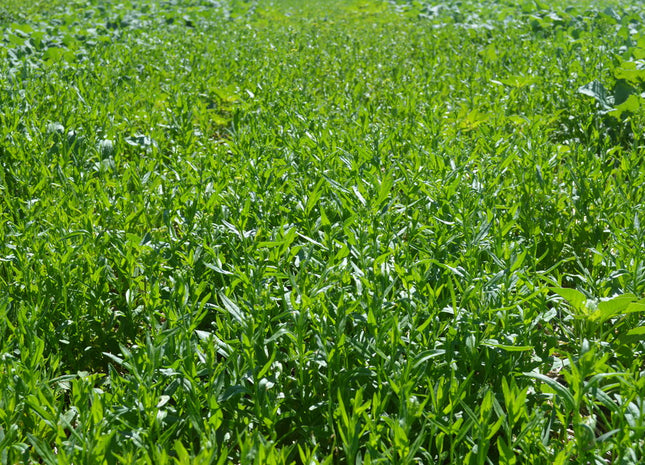
Winter Camelina
Winter Camelina is the most cold tolerant brassica with the ability to overwinter in most areas. This brassica grows a small rosette in the fall and then grows upright after winter dormancy. This is a good brassica to add to later planted fall mixes in cases after fall harvested cash crops. Camelina can be a great addition ahead of spring cash crops with its ability to scavenge nitrogen and phosphorus.
from $2.38 per lb

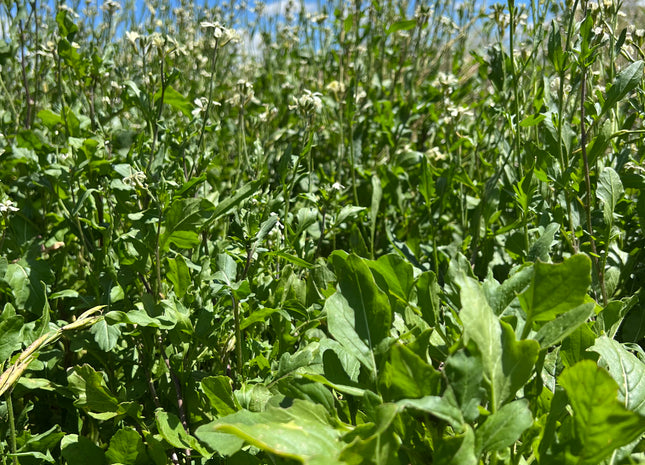
Arugula (Roquette)
What is usually known as a salad green, arugula can also be used in cover crop mixes. Arugula is a dense, low growing brassica other than its white flower when it bolts. The bitter taste and smell of arugula is an indication that the glucosinolates give it a natural biofumigant use similar to mustards. Arugula is a very long season plant and if spring planted will stay green late into the fall.
from $2.25 per lb

White Mustard (Action)
Action white mustard is a superior white mustard variety known for its excellent nematode reduction properties. This variety is very quick to establish and forms lots of biomass in its early stages of life. Action mustard is very stable due to it's extensive root system making it well suited to strip-till situations. This mustard has a low likelihood of flowering so it will stay in vegetative stage for a longer period of time making it ideal as a grazing mustard.
from $2.50 per lb

Turnip (Twister Hybrid)
Twister is a rapeseed x turnip hybrid making it an excellent cover and forage crop. This is a great addition to any spring, summer or fall grazing mix. This hybrid turnip will produce a highly palatable leafy green top sought after by livestock and wildlife alike. The foliage will quickly cycle nutrients if left to decompose.
from $2.50 per lb
- Out of Stock


Organic Radish: Tap Master
Note: This product is certified organic. Rapid fall growth in short windows, allows radishes to fit perfectly into a traditional corn and soybean rotation. Radish residue breaks down very quickly in the spring, leaving a clean seed bed until early April. The residue has been proven to inhibit small seeded annuals from germinating. Nutrients that were scavenged are readily released back into the soil for the subsequent crop. A field planted in radishes, will allow the soil to dry and warm faster in the spring. The large root channel left behind is rich in nutrients, allows tremendous water infiltration, reduces water erosion, and a path for crops roots to follow through compacted soil layers. During decomposition, radish biofumigates the soil which can reduce pest and nematode populations.
from $2.80 per lb
- Out of Stock


Organic Turnip
Note: This product is certified organic. Purple top turnips have been a staple grazing brassica for many years and are commonly used in late summer planted grazing mixes, often with a cool season cereal. Turnip bulbs are storehouses of nutrition and energy and are very valuable to winter grazers.
from $2.88 per lb
- Out of Stock


Organic Radish
Note: This product is certified organic. Rapid fall growth in short windows, allows radishes to fit perfectly into a traditional corn and soybean rotation. Radish residue breaks down very quickly in the spring, leaving a clean seed bed until early April. The residue has been proven to inhibit small seeded annuals from germinating. Nutrients that were scavenged are readily released back into the soil for the subsequent crop. A field planted in radishes, will allow the soil to dry and warm faster in the spring. The large root channel left behind is rich in nutrients, allows tremendous water infiltration, reduces water erosion, and a path for crops roots to follow through compacted soil layers. During decomposition, radish biofumigates the soil which can reduce pest and nematode populations.
from $3.07 per lb

